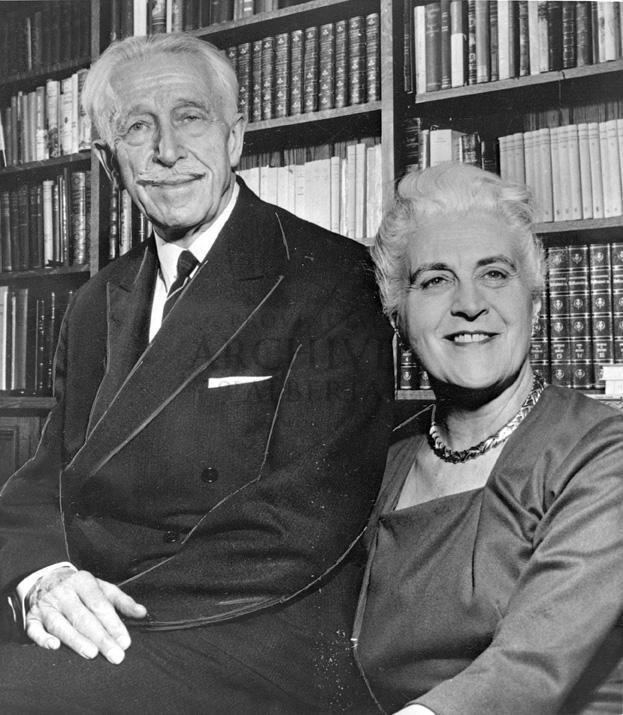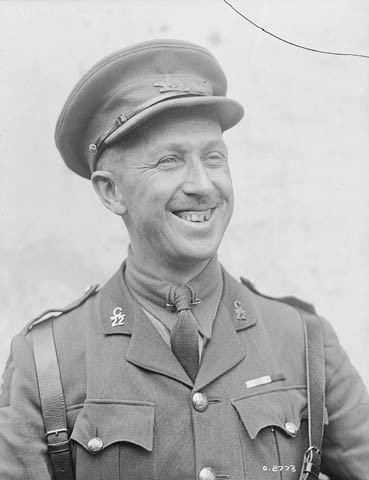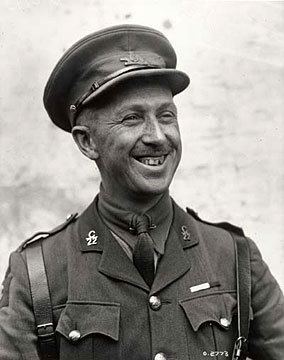Religion Roman Catholicism Name Georges Vanier | Profession Officer, Diplomat Children Jean Vanier | |
 | ||
Prime Minister John DiefenbakerLester B. Pearson Books Georges Vanier: Soldier: the Wartime Letters and Diaries, 1915-1919 Similar People | ||
Death of georges vanier former governor general of canada 1967
Major-General Georges-Philéas Vanier (23 April 1888 – 5 March 1967) was a Canadian soldier and diplomat who served as Governor General of Canada, the 19th since Canadian Confederation.
Contents
- Death of georges vanier former governor general of canada 1967
- VANIER FUNERAL NO SOUND
- Early life and youth
- Diplomatic career
- Governor General of Canada
- As governor general designate
- In office
- Death
- Legacy
- Titles
- Unofficial
- Military ranks
- Honours
- Honorary military appointments
- Honorary degrees
- Honorific eponyms
- References

Vanier was born and educated in Quebec. In 1906, he was valedictorian when he graduated with a BA from Loyola College. After earning a university degree in law, served in the Canadian army during the First World War; on the European battlefields he lost a limb, but was commended for his actions with a number of decorations from the King. Subsequently, Vanier returned to Canada and remained in the military until the early 1930s, when he was posted to diplomatic missions in Europe. With the outbreak of the Second World War, Vanier once again became active in the military, commanding troops on the home front, until the cessation of hostilities in 1945, whereupon he returned to diplomatic circles. He was in 1959 appointed as governor general by Queen Elizabeth II, on the recommendation of Prime Minister of Canada John Diefenbaker, to replace Vincent Massey as viceroy, and he occupied the post until his death in 1967. Vanier proved to be a popular governor general, with his war record earning respect from the majority of Canadians; though, as a Quebecer, he was met with hostility by Quebec separatists.

VANIER FUNERAL - NO SOUND
Early life and youth

Vanier was born in the Little Burgundy neighbourhood of Montreal to an Irish mother and a French-Norman father, who raised Vanier to be bilingual. After graduating from high school, he attended Loyola College, receiving in 1906 a Bachelor of Arts degree in church devotional fellowship, and then went on to earn in 1911 his Bachelor of Laws degree from the Montreal campus of the Université Laval. Vanier was called to the Quebec bar that year and, though he took up the practice of law, he considered entering the Catholic priesthood. But, with the outbreak of the First World War, he decided that offering his service to King and country should take priority and thereafter enlisted in the Canadian Army. Vanier took on a prominent role in recruiting others, eventually helping to organise in 1915 the French Canadian 22nd Battalion of the Canadian Expeditionary Force, of which he was commissioned as an officer, and which later, in 1920, became the Royal 22e Régiment.
After Vanier, for his efforts, received the Military Cross in 1916, he continued fighting in the trenches. In late 1918, he led an attack at Chérisy and was shot in the chest and both legs, resulting in the loss of his right leg due to a shell blast. His recovery was lengthy, though he spent it in France, refusing to be evacuated while his fellow soldiers remained fighting. With the cessations of hostilities, however, Vanier, for his bravery, was again awarded the Military Cross and given the 1914-15 Star, along with being appointed to the Distinguished Service Order. He thereafter returned to Montreal and once more found employment practicing law. On 29 September 1921, he married Pauline Archer and the couple had five children, including Thérèse Vanier and Jean Vanier.
Diplomatic career
For four years beginning in 1921, Vanier acted as aide-de-camp to Governor General the Viscount Byng of Vimy, leaving this post when he was promoted to the rank of lieutenant colonel and took command of the Royal 22e Régiment at La Citadelle. Vanier occupied that position for only one year before again becoming aide-de-camp for Byng's viceregal successor, the Marquess of Willingdon.
In 1928, Vanier was appointed to Canada's military delegation for disarmament to the League of Nations and, in 1930, was named secretary to the High Commission of Canada in London, remaining at that post for nearly a decade—approximately half of which he spent serving the man who would eventually immediately precede him as governor general of Canada, Vincent Massey. It was also during that period, in the tumultuous year of 1936, that King George V died and his son, Prince Edward, Prince of Wales, acceded and then abdicated in favour of his younger brother, Prince Albert, Duke of York. On 12 May 1937, Vanier, along with his son, Jean, watched from the roof of Canada House the coronation parade of their new king, George VI. In the procession below, Vanier would have seen one of the future governors general of Canada, Harold Alexander, who was then the personal aide-de-camp to the King.
In 1939, Vanier was elevated to the position of the King's Envoy Extraordinary and Minister Plenipotentiary to France. However, with the outbreak of Second World War and the Nazi occupation of France in 1940, Vanier and his wife fled to the United Kingdom and then back to Canada in 1941, where he was commissioned as commander of the military district of Quebec and began an early policy of bilingualism in the army. The next year Vanier was promoted to the rank of major general and then made the Canadian Envoy Extraordinary and Minister Plenipotentiary to the governments of Belgium, Czechoslovakia, Greece, the Netherlands, Norway, Poland, and Yugoslavia, as well as the representative of the Canadian government to the Free French and later the Conseil National de la Résistance, all of which were governments in exile. Throughout this time, Vanier attempted to convey to officials in Canada the seriousness of the situation in Europe, especially regarding refugees from the Nazi regime. To the frustration of the Vaniers, these efforts were met predominantly with indifference and even anger, and Vanier's letters to the prime minister at the time, William Lyon Mackenzie King, failed to induce a change in Canada's immigration policies.
Following the fall of Vichy France in 1944 to the Allied forces, Vanier was posted as Canada's first ambassador to France. While serving in that role, as well as acting as Canada's representative to the United Nations, he toured in 1945 the recently-liberated Buchenwald concentration camp and, on a return trip to Canada, delivered via the Canadian Broadcasting Corporation a speech expressing his shame over Canada's inaction, saying: "How deaf we were then, to cruelty and the cries of pain which came to our ears, grim forerunners of the mass torture and murders which were to follow." Back in Paris, he and his wife continued to help the refugees who arrived at the embassy, arranging for them food and temporary shelter. The couple, with the assistance of numerous others, eventually pushed the government of Canada to revise the regulations of immigration and more than 186,000 European refugees settled in Canada between 1947 and 1953.
It was in 1953 that Vanier retired from diplomatic service and returned to Montreal, though he and his wife continued social work there. Vanier simultaneously sat as a director of the Bank of Montreal, the Credit Foncier Franco-Canadien, and the Standard Life Assurance Company, and served on the Canada Council for the Arts.
Governor General of Canada
Vanier was the first French Canadian governor general of Canada, his bilingualism proving to be an asset to his mandate of fostering Canadian unity. Following on that of Vincent Massey, an Anglophone, the appointment of Vanier established the tradition of rotating between French and English speaking persons. Vanier's tenure was marked by economic problems plaguing the country and a succession of minority governments, but the greatest threats to Confederation came from the rise of the Quiet Revolution, Quebec nationalism, and the Quebec sovereignty movement, including the terrorist actions of the Front de libération du Québec; indeed, as a Québécois representing the Canadian monarch and someone who promoted federalism, he was perceived by many Quebec separatists to be a traitor to his people. Amongst most other circles in the country, however, he was lauded as a distinguished viceroy.
As governor general-designate
The appointment of Vanier as governor general was announced on 1 August 1959, at Halifax, Nova Scotia, during a meeting of the Queen's Privy Council for Canada at which Queen Elizabeth II was present and, by commission under the royal sign-manual and Great Seal of Canada, approved of Vanier as her representative. In spite of the challenges of poor health and political unrest in Canada, the Major-General said of his commission to represent the Queen: "If God wants me to do this job, He will give me the strength to do it."
As Vanier was a staunch Liberal Party supporter and the ministers of the Crown were at that time Progressive Conservatives, the announcement of the Major-General's appointment received surprised reaction from Ottawa insiders and the media. The Prime Minister, John Diefenbaker, however, felt that more Francophone representation was needed in Canada's government; in his memoirs, Diefenbaker said he had considered a non-Canadian for the post and attributed his decision to put forward Vanier for appointment to a chance meeting with the Major-General.
In office
Upon taking up residence at Rideau Hall, Vanier asked that a bilingual sign be placed at the main gates to the royal and viceroyal residence and that a chapel for offering Mass be constructed somewhere on the property, two requests that reflected two dominant forces in Vanier's life: religion and Canadian unity. When he was in residence, Vanier would pray twice daily in the chapel that was eventually fit into the palace's second floor and, at a time when the Canadian federation was under threat from separatists factions in Quebec, Vanier delivered numerous speeches, in both French and English, and infused with words praising the co-habitation of Anglophone and Francophone Canadians; in one of the last orations he gave, he said: "The road of unity is the road of love: love of one's country and faith in its future will give new direction and purpose to our lives, lift us above our domestic quarrels, and unite us in dedication to the common good... I pray God that we may all go forward hand in hand. We can't run the risk of this great country falling into pieces." Words like these, though, earned Vanier the ire of Quebec nationalists, as demonstrated when, on Saint-Jean-Baptiste Day in 1964, he found himself the target of such people in Montreal, who held placards reading "Vanier vendu" ("Vanier traitor") and "Vanier fou de la Reine" ("Vanier Queen's jester").
Despite his poor health, and his doctor's warnings about strain, Vanier travelled across Canada, gaining the affection of Canadians. As part of his official duties, Vanier, along with the Queen, attended the inauguration of the Saint Lawrence Seaway on 26 June 1959 and, in June 1965, the same year he inaugurated the new national flag, was made Chief Big Eagle of the Blackfoot tribe in Calgary. He was also active in encouraging children to achieve, using his role as Chief Scout of Canada to this end. His and his wife's concern for family life drew them to founding in 1964 the Canadian Conference of the Family, which eventually became the Vanier Institute of the Family. As the representative of the head of state, Vanier hosted a list of official guests, including United States president John Kennedy and Jacqueline Kennedy; the Emperor of Ethiopia, Haile Selassie; David Ben-Gurion, Prime Minister of Israel; the Shah of Iran; and General Charles de Gaulle, President of France.
Death
By 1966, though his itinerary remained unreduced, Vanier's strength was failing. On 4 March 1967, before watching a Montreal Canadiens game on television at Rideau Hall, Vanier had conversed with his prime minister at the time, Lester B. Pearson, and had expressed to him that he was willing to continue on as governor general until the end of the centennial year. Given Vanier's physical state, Pearson was hesitant to advise the Queen to act along those lines, but his worry was short lived, as the following day, after hearing the Holy Sacrifice of the Mass and receiving Holy Communion in the chapel, the Governor General died. With Robert Taschereau, Chief Justice of Canada, acting as Administrator of the Government, more than 15,000 messages of sympathy were received at Rideau Hall.
Following a state funeral at the Notre-Dame Cathedral Basilica on 8 March 1967, the Major-General was buried at La Citadelle's commemorative chapel on 5 May of the same year. Though Vanier had earlier hosted the French president at Government House, neither de Gaulle nor any representative was sent to attend the funeral, which was read by Canadian diplomatic officials as a hint that there had been a change in Canada–France relations and instigated the chain of events that would culminate in de Gaulle's "Vive le Québec libre" speech in Montreal later that year.
Legacy
When, in 1999, Maclean's compiled a list of the 100 most influential Canadians of all time, Vanier was placed by the editors at position number one. His time in the Office of the Governor General saw the creation of a number of awards that reflected the Major-General's interests. He was an avid fan of sport and, though his favourite was hockey and specifically the Montreal Canadiens, Vanier instigated in 1965 the Governor General's Fencing Award and the Vanier Cup for the university football championship in the Canadian Intercollegiate Athletic Union. To recognise excellence in more bureaucratic endeavours, Vanier initiated in 1962 the Vanier Medal of the Institute of Public Administration of Canada and, in 1967, the Vanier Awards for Outstanding Young Canadians, awarded to deserving individuals in the Canadian Junior Chamber of Commerce. Vanier and his wife, Pauline were both nominated to be beatified in the Catholic Church because of their piety and love for humanity.
